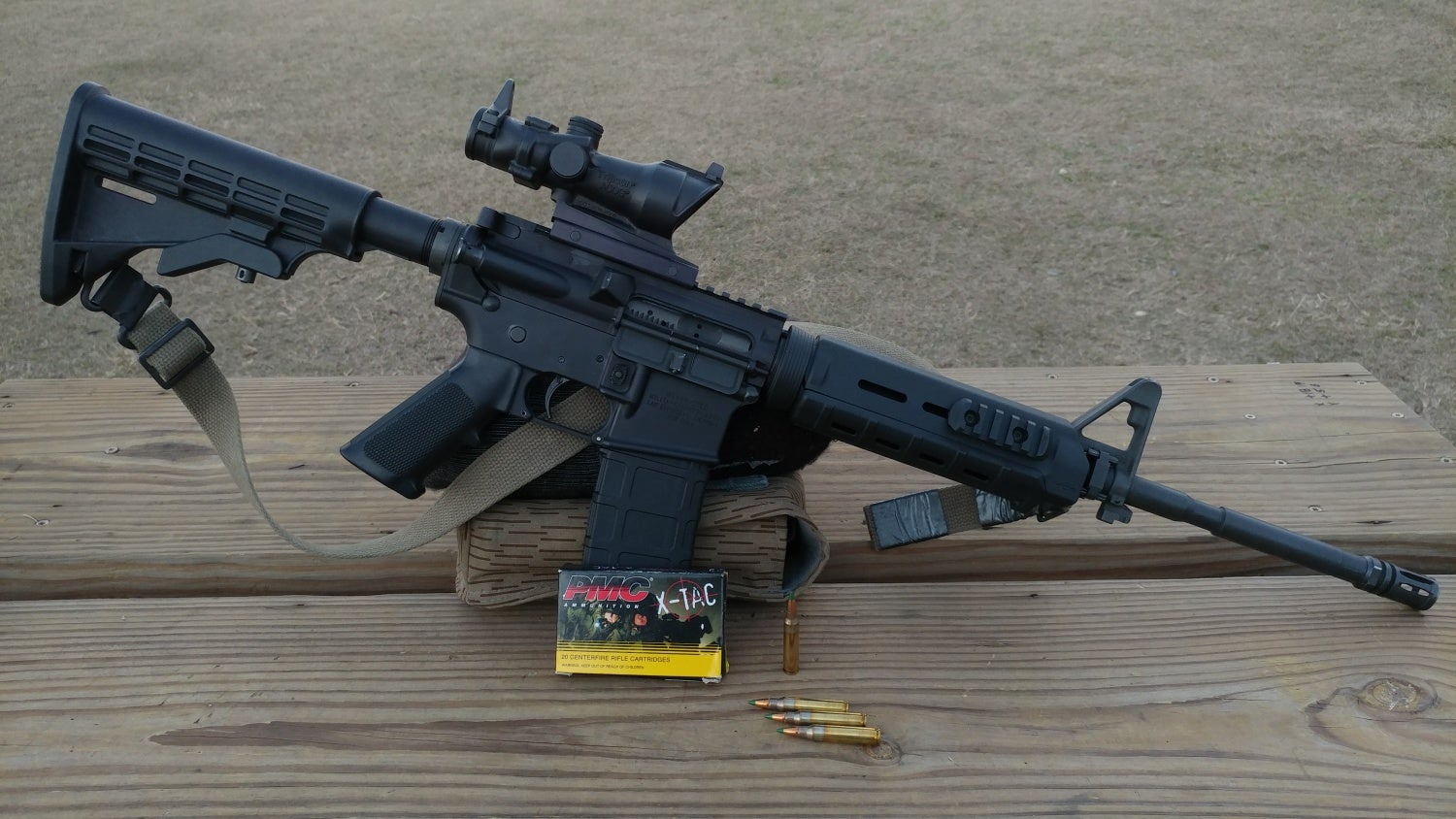Next up for the Big Freakin’ Cartridge Test is Korean manufacturer PMC’s clone of M855, called X-TAC M855 LAP. This ammunition features very uniform-looking external dimensions, attractively finished brass cases and projectile jackets, and a reasonable price. I formerly used M855 as a stockpiling round, although I have since switched to other rounds like Federal’s T556TNB1.
Continuing on from the last installment, we are now looking at the velocity test results for the 20″ barrel (more on the 16″ later). The test procedure was as follows:
- Condition ammunition to 70 °F +/- 5 degrees for at least 1 hr (in practice ammunition was always conditioned overnight).
- Mount chronograph to barrel or rail.
- Record the temperature in the conditioned container before each string.
- Withdraw one round of ammunition from the cooler.
- Load and immediately fire the round.
- Cool chamber back to ambient conditions for 30 seconds*
- Repeat steps 3 through 6 nine more times.
This procedure was followed for 14.5″, 16.1″, and 20″ barrel length velocity tests. To measure velocity, a Magnetospeed V3 chronograph was used attached to the barrels of the 16.1″ and 20″ uppers, and the rail of the 14.5″ upper. It needs to be noted that for all 16″ barrel testing, a cooling time of 10 seconds was used instead of 30, as it was becoming obvious that the additional 20 seconds were unnecessary. In the future, 10 seconds will be used for all barrel lengths.
The chronograph results for the 20″ FN chrome-lined CHF barrel are as follows (Shot #, followed by muzzle velocity in ft/s):
1. 3,046
2. 3,067
3. 3,051
4. 3,077
5. 3,071
6. 3,043
7. 3,051
8. 3,061
9. 3,085
10. 3,042
Which gave us the following figures:
Min: 3,042
Max: 3,085
Avg: 3,059
Standard Deviation: 15.0
Extreme Spread (highest minus lowest): 43
And the chronograph results for the 16.1″ Colt chrome-lined cut rifled barrel (Shot #, followed by muzzle velocity in ft/s):
1. 2,925
2. 2,923
3. 2,911
4. 2,922
5. 2,897
6. 2,962
7. 2,951
8. 2,974
9. 2,907
10. 2,948
Which gave:
Min: 2,897
Max: 2,974
Avg: 2,932
SD: 25.3
ES: 77
From these figures, we can tell a few things. First, the PMC M855 produces only a little less velocity from the 16.1″ Colt barrel than the XP193 from the same manufacturer – a mere 35 ft/s difference. Given the higher weight and considerably higher SD of the M855 round, the choice in terms of raw velocity numbers is pretty obvious.
In terms of consistency, we see basically the same phenomenon from the XP193 repeated with the M855. For M855, the ES were 83, 77, and 43 for the 14.5″, 16.1″, and 20″ barrels, respectively. For XP193 the ES were 39, 86, 34, for 14.5″, 16.1″, and 20″, respectively. SDs for M855 were 22.4, 25.3, and 15.0 for each respective barrel length, while for XP193 they were 15, 28.1, and 9.4. The consistently low ESs and SDs for the 20″ barrel lend a little weight to the theory that these rounds are most consistent out of the barrel length for which they are specified. However, it’s also interesting to contrast the results for XP193 and M855 from the 14.5″ barrel, where the former was far more consistent.
 Your Privacy Choices
Your Privacy Choices

